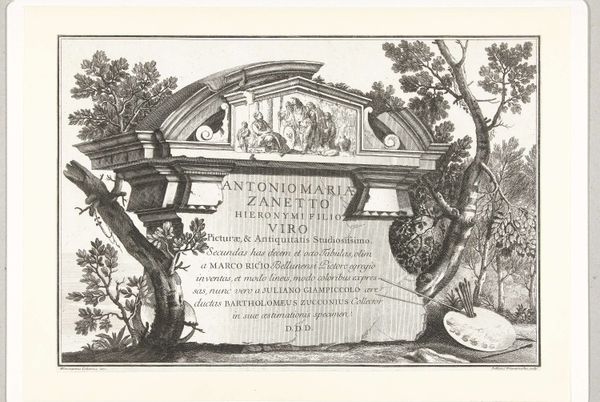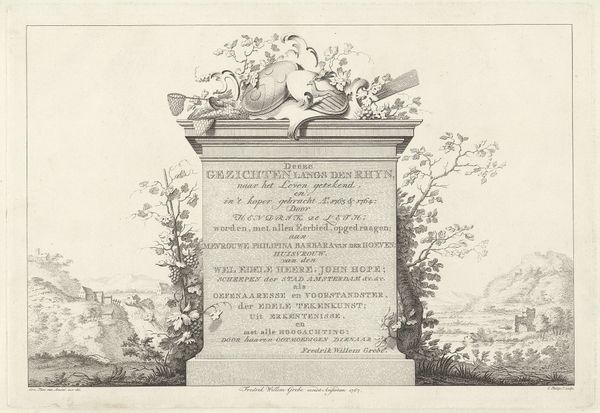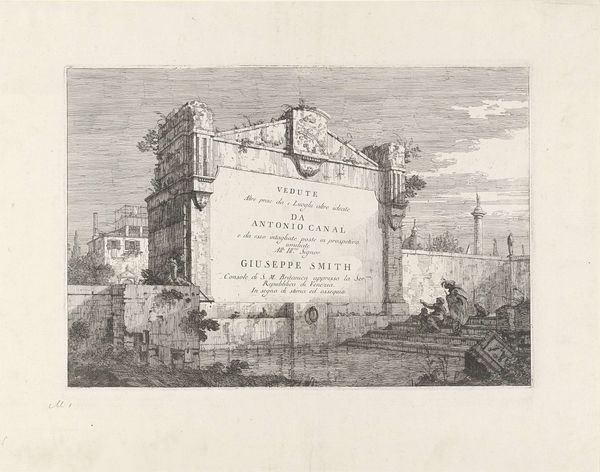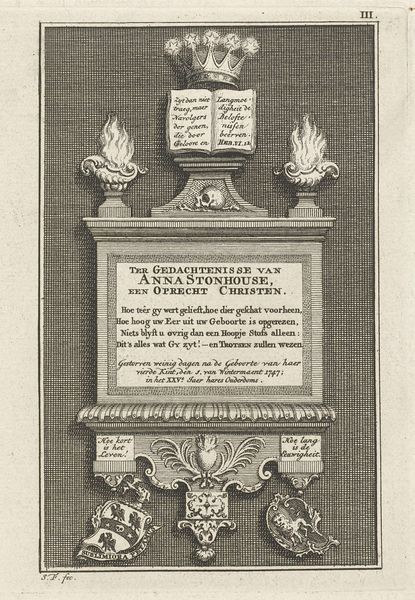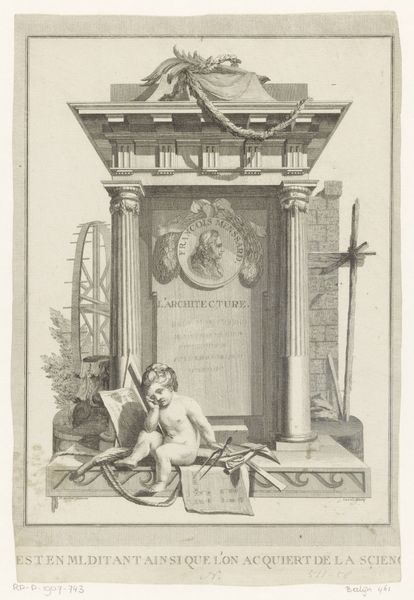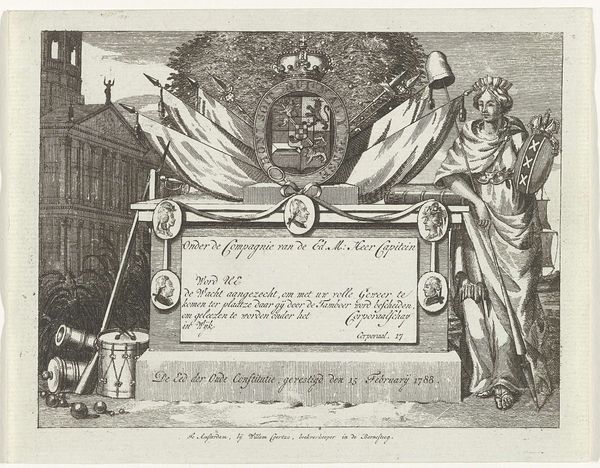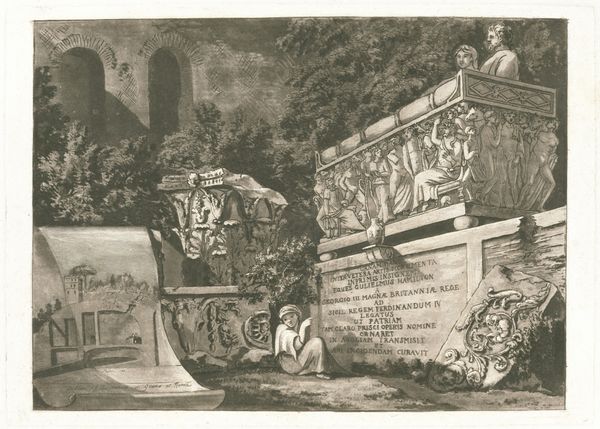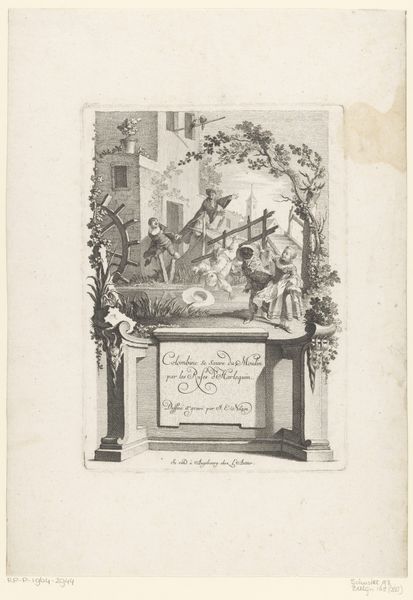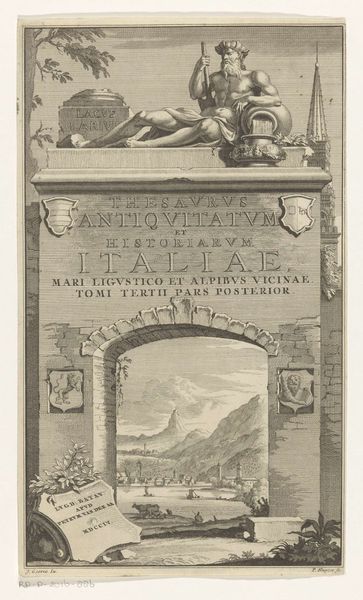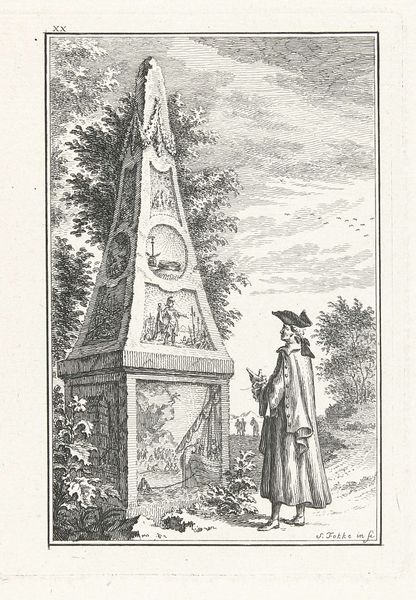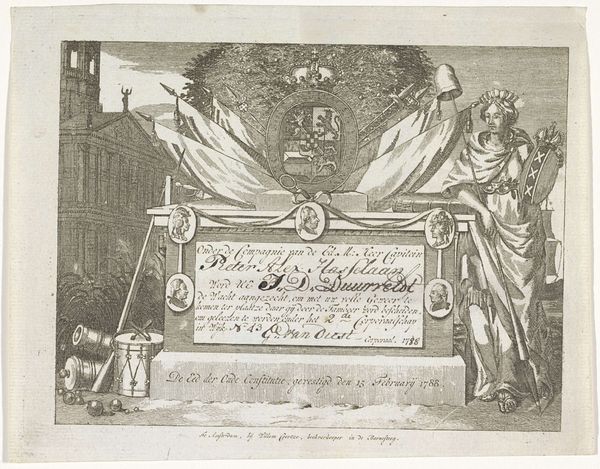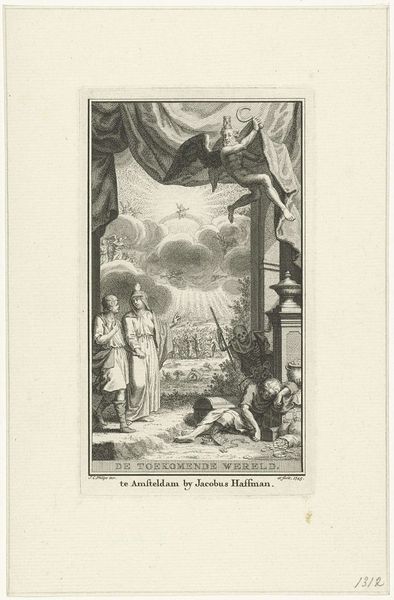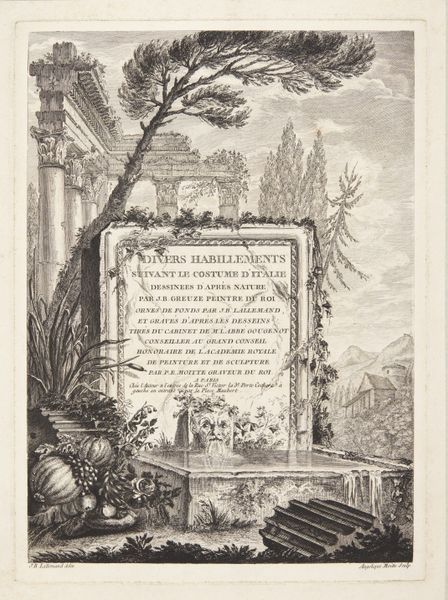
#
aged paper
#
mechanical pen drawing
#
pen illustration
#
old engraving style
#
traditional media
#
personal sketchbook
#
illustrative and welcoming imagery
#
pen-ink sketch
#
pen work
#
storyboard and sketchbook work
Dimensions: height 244 mm, width 347 mm
Copyright: Rijks Museum: Open Domain
Giovanni Battista Tiepolo etched this landscape with a tomb monument in the 18th century. The print shows classical ruins and a large memorial with an inscription dedicated to Joseph Smith. The classical ruins here evoke a sense of transience and the passage of time, common in art across cultures. This motif reflects our preoccupation with mortality, echoed in the vanitas paintings of Northern Europe, where skulls and wilting flowers symbolize life's fleeting nature. The inscription panel, framed by classical architecture, suggests a deep connection to the past and a desire to immortalize achievements through art. Similar commemorative structures can be seen in ancient Roman monuments, indicating a timeless human impulse to memorialize. The emotional power of this image lies in its gentle invitation to contemplate our place in the vast historical narrative. It links us to both the personal memories of Smith and the broader cultural memory of classical antiquity. Through such symbols, Tiepolo taps into our subconscious understanding of time. This creates a powerful connection that transcends historical context. The motif of the tomb, ruins, and epitaphs—reappears in various forms throughout art history—a testament to our perennial quest to confront mortality and preserve memory.
Comments
No comments
Be the first to comment and join the conversation on the ultimate creative platform.
